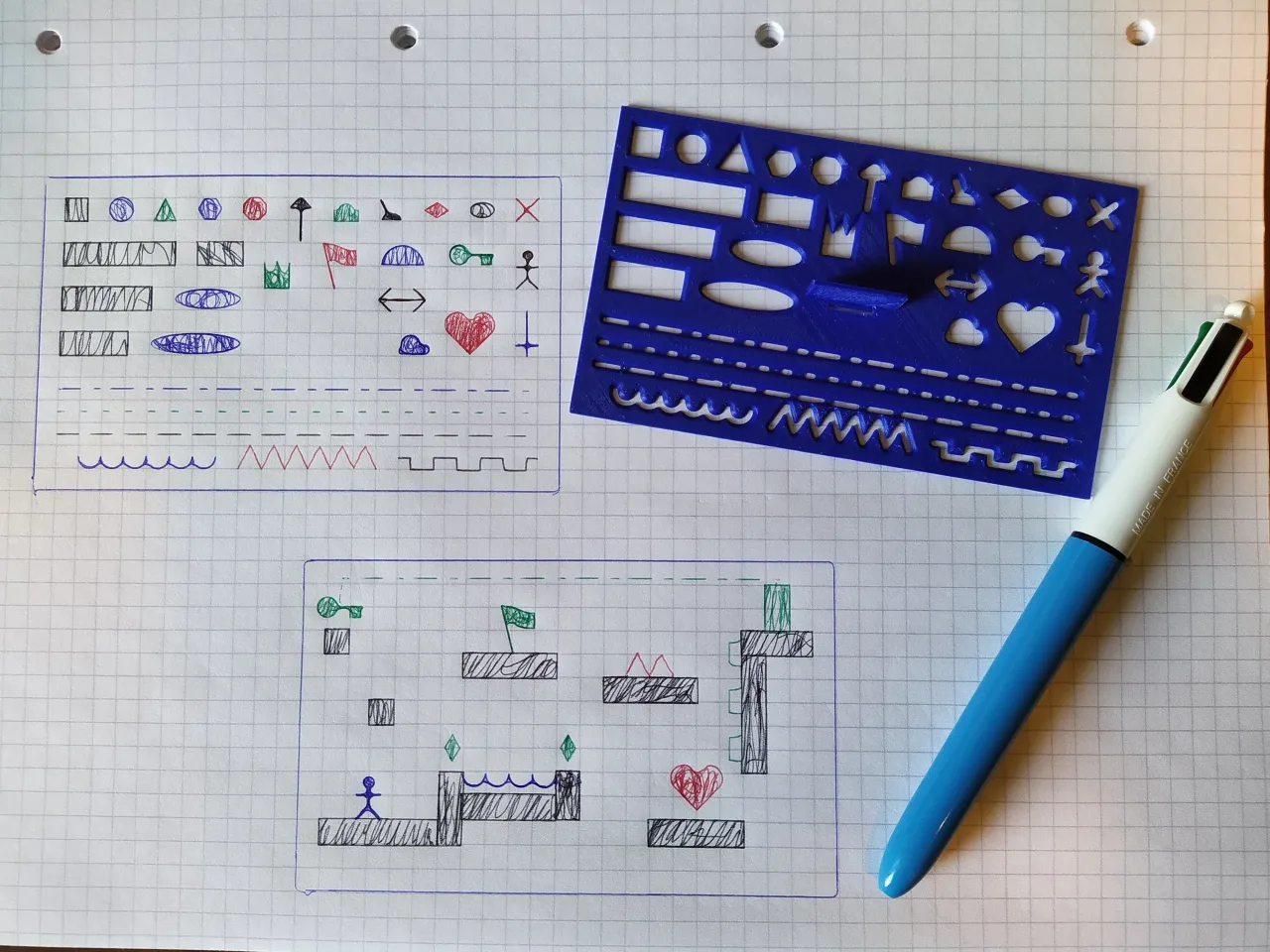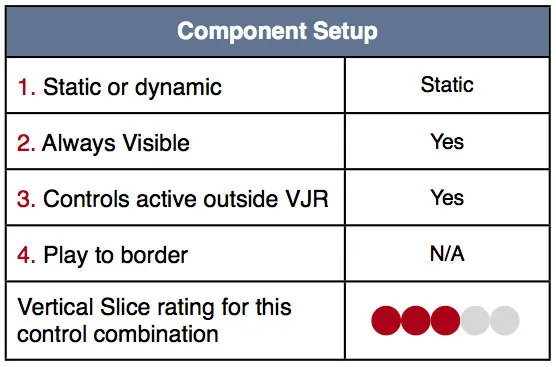In the dynamic realm of game development, innovation, and creativity are at the heart of every groundbreaking title. Game prototyping, the incubator of these innovations, serves as the catalyst for transforming visionary ideas into interactive realities. This exploration delves into the fascinating world of game prototyping, unveiling its essence, the crucial steps involved, the diverse types it encompasses, and its profound significance in the game development process. As we journey through the intricacies of this creative incubation, in this article by Polydin game art outsourcing studio we’ll unveil the secrets to crafting successful game prototypes, the pitfalls to avoid, and the remarkable advantages they bestow upon the ever-evolving landscape of interactive entertainment. Game prototyping is the genesis of gaming excellence, and this guide is your passport to unlocking its transformative power.
What is Game Prototyping

Game prototyping is the initial and foundational stage in the game development process, where designers and developers create a simplified version of a video game idea to explore its core mechanics, gameplay dynamics, and overall feasibility. Prototypes serve as tangible proof-of-concept models, allowing creators to test and refine ideas, identify potential challenges, and make informed decisions before committing to full-scale development. These early iterations of a game may vary widely in complexity, from basic paper sketches to interactive digital models, but they all share the common goal of providing a hands-on glimpse into the game’s potential.
Game Prototyping Steps

The game prototyping process involves several key steps:
- Conceptualization: Define the game’s core concept, objectives, and unique selling points. Identify the target audience and the intended platform for the game.
- Design: Create a detailed design document that outlines the game’s mechanics, gameplay flow, characters, and world. This document serves as a blueprint for the prototype.
- Paper Prototyping: Begin with low-fidelity paper prototypes, sketching out the game’s interface, levels, and mechanics. This step allows for quick iteration and idea validation.
- Digital Prototyping: Transition to digital tools to create interactive prototypes. Use game engines or specialized prototyping software to implement basic gameplay elements.
- Testing and Iteration: Continuously playtest the prototype, gather feedback, and make necessary adjustments to refine the game’s mechanics and overall experience.
- Polishing: Enhance the prototype’s visuals, audio, and user interface to make it more representative of the intended final product.
- Presentation: Share the prototype with stakeholders, including team members, investors, and potential publishers, to showcase the game’s potential.
- Decision-Making: Based on the feedback and results from the prototype, make informed decisions about whether to proceed with full-scale development, pivot the concept, or iterate further.
Types of Game Prototypes

Game prototypes come in various forms, tailored to the needs of the development team and the stage of the project:
- Conceptual Prototypes: These prototypes focus on the core idea, showcasing the game’s unique selling points without delving into intricate gameplay mechanics. They are often used to pitch the concept to stakeholders.
- Vertical Slice Prototypes: A vertical slice prototype provides a small but fully functional portion of the game. It demonstrates core gameplay elements, graphics, and mechanics to assess their feasibility and appeal.
- Proof-of-Concept Prototypes: These prototypes are designed to test specific technical or gameplay concepts to ensure they work as intended before committing to full development.
- Playable Prototypes: Playable prototypes offer a hands-on experience of the game’s core gameplay. They may lack polish but provide a clear sense of the intended player experience.
- Paper Prototypes: Basic sketches and paper-based prototypes are valuable for quick idea validation and brainstorming. They are low-cost and allow for rapid iteration.
- Interactive Prototypes: These digital prototypes incorporate interactive elements using game engines or prototyping tools. They aim to simulate the gameplay experience more realistically.
The choice of prototype type depends on the goals of the development team, the complexity of the game, and the resources available. Each type serves a specific purpose in the iterative and creative process of game development.
The Importance of Prototypes in Game Development

Prototyping is a cornerstone of game development, holding immense importance throughout the creative process. Firstly, prototypes serve as a tangible bridge between conceptualization and execution, allowing developers to breathe life into their ideas and test them in a hands-on manner. They provide a safe environment to experiment, refine gameplay mechanics, and identify potential design flaws early in the development cycle, ultimately saving time and resources. Prototypes are invaluable for communicating ideas effectively to stakeholders, whether it’s the development team, investors, or publishers, as they offer a concrete vision of the game’s potential. Furthermore, they help in establishing a cohesive vision and aligning the team’s efforts toward a common goal. By reducing ambiguity and uncertainty, prototypes foster creativity, innovation, and informed decision-making, making them an indispensable tool in the game development toolbox.
Things to Avoid in Game Prototype Development

While game prototypes are powerful tools, there are common pitfalls and mistakes that developers should avoid during the prototyping phase. One of the primary mistakes is overcomplicating the prototype. It’s essential to focus on the core gameplay and features rather than attempting to build a fully polished game. Overambitious goals can lead to wasted time and resources. Another mistake is neglecting user testing. Not involving players or target users early in the process can result in missing crucial feedback and overlooking usability issues. Additionally, developers should avoid overinvesting in a single prototype without exploring alternative ideas. Lastly, it’s crucial not to fall into the trap of assuming that a positive reaction to a prototype guarantees the success of the final game. Prototypes are valuable for validation but must be followed by rigorous development and testing to ensure a well-rounded, enjoyable gaming experience.
The Advantages of Game Prototyping

Game prototyping offers numerous advantages that significantly impact the game development process:
- Risk Mitigation: Prototypes help identify potential design flaws, technical challenges, and gameplay issues early, reducing the risk of costly mistakes later in development.
- Enhanced Creativity: Prototyping encourages creative experimentation, allowing developers to explore innovative ideas and refine them iteratively.
- Effective Communication: Prototypes serve as a visual and interactive medium to convey ideas and concepts to team members, stakeholders, and investors, fostering a shared understanding of the game’s vision.
- Iterative Improvement: Prototyping allows for continuous testing and refinement, enabling developers to fine-tune gameplay mechanics, graphics, and user experiences.
- Resource Efficiency: By focusing resources on a smaller scale during the prototype phase, developers can make informed decisions about resource allocation for full-scale development.
- Early User Feedback: Prototypes facilitate early playtesting, providing valuable user feedback and insights that can inform design choices and priorities.
- Reduced Development Time: Effective prototypes help streamline the development process by identifying and addressing issues promptly, leading to shorter overall development timelines.
- Informed Decision-Making: Prototypes empower developers and stakeholders to make data-driven decisions, resulting in a more polished and player-centric final product.
- Alignment of Vision: Prototyping ensures that the development team is on the same page regarding the game’s core mechanics and design, reducing misunderstandings and conflicts.
Game Prototyping Tools
Game prototyping is a crucial step in game development, allowing developers to test mechanics, iterate on ideas, and refine gameplay before full production. The right tools can speed up the process and provide flexibility for different needs.
Unity
Unity is a popular game engine for prototyping due to its versatility and extensive asset store. With built-in physics, scripting in C#, and a strong community, it supports everything from 2D mobile games to complex 3D worlds. Its Play Mode feature allows for quick testing and iteration.
Unreal Engine
Unreal Engine excels in high-fidelity visuals and real-time rendering, making it ideal for prototyping immersive 3D games. Blueprint Visual Scripting enables developers to create mechanics without coding, while its powerful editor speeds up level design and iteration.
GameMaker Studio
GameMaker Studio is widely used for 2D game prototyping, thanks to its drag-and-drop interface and built-in scripting language (GML). It simplifies asset management and logic creation, making it an excellent choice for platformers, metroidvanias, and indie projects.
Figma/Adobe XD
While not traditional game engines, Figma and Adobe XD are useful for prototyping UI/UX elements. Developers can map out interfaces, transitions, and interactions before integrating them into a game engine, ensuring smooth navigation and usability.
No-Code/Low-Code Game Prototyping Platforms
Platforms like GDevelop, Construct, and PlayCanvas allow for rapid game prototyping without requiring programming skills. These tools are great for testing core mechanics, especially for indie developers and designers who want to experiment quickly.
Tips & Tricks for Making Successful Game Prototypes

Here are some tips and tricks on how to make successful game prototypes:
- Start Simple: Begin with a clear and straightforward concept. Focus on the core gameplay mechanics that define your game’s unique selling points. Avoid adding unnecessary complexity at this stage.
- User-Centered Design: Always consider the player’s experience. Prioritize user-friendliness and accessibility in your prototype to ensure that players can engage with and enjoy your game.
- Rapid Iteration: Don’t be afraid to iterate quickly. Make frequent updates to your prototype based on feedback and your own observations. This iterative process will help you refine your ideas.
- User Testing: Involve players early and often in the testing process. Gather feedback, observe how players interact with your prototype, and use this information to make informed design decisions.
- Set Clear Goals: Define specific goals for your prototype. What are you trying to test or demonstrate? Having clear objectives will keep your development focused.
- Reuse Assets: If possible, reuse existing assets or use placeholders for graphics and audio. This saves time and allows you to focus on gameplay and functionality.
- Stay Organized: Keep your development process organized. Maintain clear documentation, version control, and a development schedule to stay on track.
- Scope Realistically: Be mindful of your prototype’s scope. It’s better to have a small, polished prototype than a sprawling, unfinished one. Focus on quality over quantity.
- Embrace Constraints: Embrace the limitations of your prototype tools and resources. Constraints can foster creativity and encourage innovative solutions.
- Seek Inspiration: Play other games, study successful prototypes, and draw inspiration from various sources to infuse fresh ideas into your project.
- Solicit Feedback Early: Don’t wait until your prototype is complete to seek feedback. Share it with peers, mentors, or online communities for valuable insights.
- Test Across Platforms: If your game is intended for multiple platforms, consider testing your prototype on each platform to identify potential issues and adaptability.
- Document Your Process: Keep detailed records of your development process, decisions, and feedback received. This documentation can guide your future development steps.
Final Thoughts
Game prototyping is the cornerstone of innovation and progress in the world of game development. It’s the playground where ideas take shape, creativity flourishes, and game concepts evolve into captivating interactive experiences. By following best practices, remaining open to feedback, and embracing the iterative nature of prototyping, developers can harness the power of this crucial phase to create games that resonate with players, leaving a lasting impact in the ever-evolving landscape of interactive entertainment.



